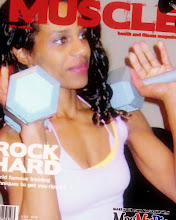Try the following. Do a search in Google, or your favorite search engine, on the term "best weight loss diet". What you will see turn up is hundreds of links to diets, all claiming to be the best. Unfortunately, what many of these diets really do is starve you and your body from the kind of proper nutritional diet, and the calories, needed to function properly.
Other dieting plans are only temporary fixes, so that as soon as you go back to your normal eating habits you put any weight that you lost right back on. Some of the worst of these plans involve the so-called detox diets that force you to completely starve your body of all nutrients for certain periods of up to 7 - 10 days.
Well, I guess if you are looking for a really quick fix, and are simply trying to fit into a dress for an evening, then one of these diets might just work for you - for a very short duration. But most of these diets, as you can probably see by now, are dangerous to your health.
Diets that do not attempt to remove food from your plate, and which include plenty of nutrients and minerals, are in general good for you. Healthy diets resemble more an eating plan, or a lifestyle change, and do not really appear to be diets at all, even if we still use the term diet to describe them.
So, the best weight loss diet, or program, really involves a plan that includes a healthy selection of foods, and a lifestyle change. For example, by learning to put less food on your plate and eating slower, you effect a lifestyle change that virtually guarantees a gradual but ongoing weight loss with minimal interruption to your current dietary habits. This technique re-trains your stomach, and your brain, and gives your body time to actually process the food that you are eating. It lessens the chance of overstuffing yourself, which often happens simply because you have added too much food to your plate.
Once you get this "smaller plate" practice down, you can start eating more frequently over the course of the day. This step may come naturally, because when you cut your portions down, and stop eating when you are full, you will naturally get hungrier more often.
A good plan is to have your three (smaller) meals, along with a healthy ? a meal between breakfast and lunch, and again between lunch and dinner. Meals like ? a serving of oatmeal, a bowl of fruits, some fresh vegetables - all are good for these "snack" times.
So now, you know what to do for a healthy diet, but possibly not what to eat. Vegetables, fruits, poultry, and fish provide you with the majority of vitamins and minerals that your body needs. Carbohydrates, surprising as it may be, are another source of nutrients required by your body. Cutting back on the carbohydrates is a good idea, but you certainly do not want to completely eliminate them from your diet.
Provided that your 5 or 6 meals a day include vegetables, fruits, poultry, fish, proteins, and a little in the way of carbohydrates, you will be enjoying a healthy diet. This is the best way to lose weight, and is the best way to stay healthy after your weight loss. Eating this way trains your body and mind for a healthy lifestyle, and will even help you to live a much longer life.
To get started on your own proper nutritional diet, and get the full theory of the small-portion eating plan, check out ex-bodybuilding champion Carolyn Hansen's product Fat Loss For Keeps and learn how to eat in such a way that weight loss never becomes something you need worry about again.
Saying goodbye to the AdSense for Feeds blog
13 years ago





